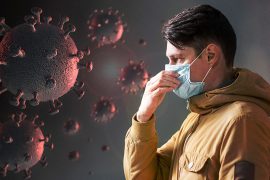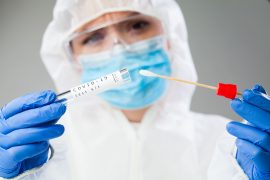Patients who get completely recovered from the fatal COVID-19 disease possess chemicals (antibodies) in their blood plasma that their bodies have produced to counter the infection in their blood and get cured of the infection. The blood of recovered COVID-19 patients is termed as Convalescent Plasma. In easier terms, plasma is the yellowish liquid part of the whole blood in which the blood cells (RBC, WBC and platelets) stay suspended. It is believed that this convalescent plasma of recovered patients can be transfused into severely ill COVID-19 patients, for boosting their immunity and enabling them to fight off their infection.
Certain blood cells function as “memory cells”, remembering the pathogen against whom they have produced antibiotics. When such blood plasma possessing the antibodies against COVID-19 is isolated from the recovered patient and transfused in the existing patient, the donor’s plasma immediately recognizes the COVID-19 viral pathogen and again produces the antibiotics to fight off the organism in the transfused patient’s body to improve their condition. This therapy is known as “Convalescent Plasma Therapy” (CPT) or simply, “Plasma Therapy”. Experts believe that this therapy can also prevent moderately ill COVID-19 patients from experiencing severe symptoms and complications related to the infection. Development of passive immunity is the basis of this therapy.
Where is this therapy used?
CPT is believed to aid COVID-19 patients who do not respond expectedly to other experimental drug therapies. Such patients may develop a severe lung complication called “Acute Respiratory Distress Syndrome”, necessitating mechanical ventilation to breathe, or else their organs begin to fail.
CPT may also help patients having chronic co-morbid conditions such as diabetes or cardiovascular diseases, whose immunity is already impaired and are COVID-19 infected of becoming severely ill.
CPT might also be considered for family members of COVID-19 patients or medical staff, who get exposed to potential patients, for preventing them from getting the infection.
Probable Risks of CPT:
Blood and plasma transfusions have been used to treat multiple diseases with exceptional safety. However, CPT does carry a risk of complications such as:
- Allergies
- Damage to the lungs and impaired breathing
- Infections from the donor’s plasma such as hepatitis or HIV
Although the risk of above-mentioned problems is very low, they can occur. Also, the therapy is still in the experimental phase and its effectiveness is not well-established in large clinical trials.
Who all can donate plasma?
- People between the age of 18 to 60 years.
- You weigh above 50 kgs.
- You are not suffering from any transmissible or chronic diseased condition.
- Your heart rate should be normal.
- Your hemoglobin level is ≥ 12.5 g/dl.
- Your blood pressure is normal.
- You should not have got any piercing done in the last 6 months.
- Above all, you should be completely free of COVID-19.
What is the procedure for donating plasma?



The procedure of donating plasma differs from that of donating blood. Though the initial process of blood collection is the same i.e. through the IV route, the whole blood collected from your arm for plasma donation has to pass through a dedicated machine for separating plasma and the blood components. Then, just the plasma is stored and the remaining portions are transfused back to the body with some saline. Hence, the procedure of plasma donation takes more time (approx. 90 minutes) than blood donation (which is 30 minutes).
In preliminary treatment, numerous individuals have benefited from CPT. Researchers keep on assessing the outcomes of individuals who got the treatment done. By considering the consequences of this treatment for COVID-19, specialists are drawing nearer to finding a treatment. Likewise, getting familiar with the utilization of CPT currently will assist healthcare workers to be better prepared to provide optimal patient care.



